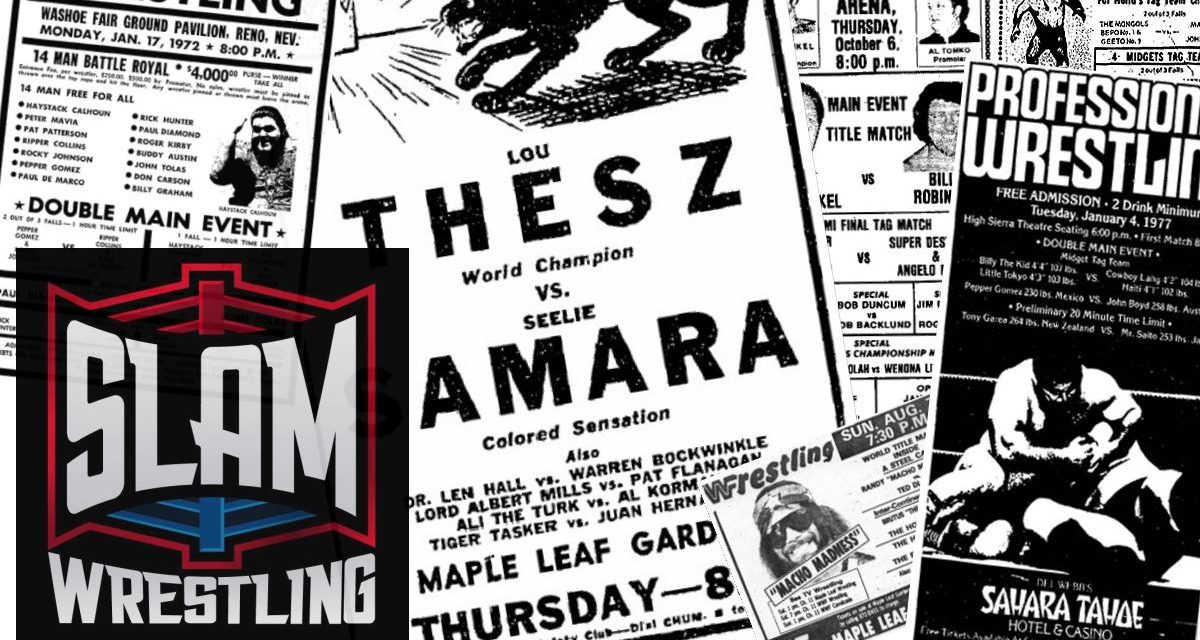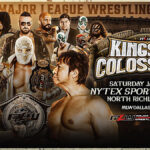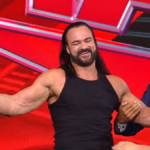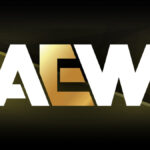When Kurt Angle made his WWE debut in 1999, he was pushed as the first pro wrestler with an Olympic gold medal. But what about Pete Mehringer, the 1932 Olympic gold medalist in freestyle wrestling at 192 pounds? His pro career may have been brief, but his story itself is fascinating and should be told. After all, he won a medal by simply reading a book.
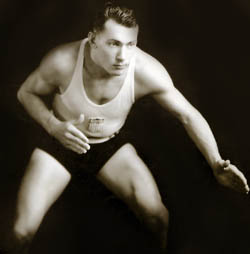
Pete Mehringer, 1932 Olympian
Mehringer’s actual recruitment into pro wrestling really wasn’t all that different than those who came years later. After all, the professional wrestling world has always keeps one eye on the Olympics in hopes of finding a crossover star who can make the transition. Bob Roop, Mark Henry, Allen Coage, Ken Patera, Naoya Ogawa and Danny Hodge are some of the more familiar names that were able to do it. Pro wrestling was a quick way to make some money after years of struggling under the draconian rules of amateur competition.
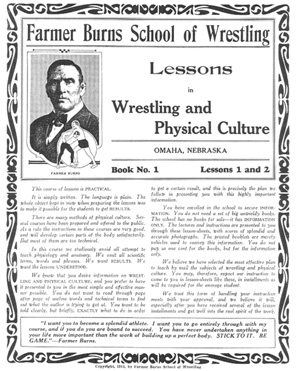
A copy of a Frank Gotch and Farmer Burns School of Wrestling and Physical Culture pamphlet.
Having never been trained in wrestling outside of reading about it in a Frank Gotch and Farmer Burns School of Wrestling and Physical Culture pamphlet, Mehringer’s gold medal came as a surprise to many. Add the fact that he was a product of the University of Kansas, where basketball has always been king, it was even more of a surprise. The university hasn’t even had a wrestling team since 1966.
The school had all but forgotten the gold medalist until a newly-built Booth Family Hall of Athletics opened in 2006. The Hall, located on the University of Kansas campus in Lawrence, has a feature on Olympians from the university, including Mehringer.
The university did little to support Mehringer and his achievement in 1932, or even after his gold medal victory. Despite only one loss during his college career, Mehringer was forced to drop out of school. The school did not provide him a scholarship and he spent his personal money to attend wrestling tournaments across the nation. He was only able to attend one national college tournament (then called the NIM) during his college career, unable to win a national title after winning the gold medal.
In fact, when the wrestling coach at Kansas quit, the school refused to hire a new coach and Mehringer would become a student-coach-wrestler.
EARLY LIFE
Pete Joseph Mehringer was born July 15, 1910 in Jetmore, a town in Western Kansas. He grew up like most Kansas natives, working on the family farm. He enjoyed football during his early school years, and became interested in wrestling after subscribing to the correspondence course entitled Frank Gotch and Farmer Burns School of Wrestling and Physical Culture.
The course would be made famous during the early parts of the century, with most wrestlers, amateur and professional, having subscribed.
“I had six other brothers and had to learn how to protect myself,” Mehringer told the Long Beach Independent Press Telegram in 1953. “So I sent off to Omaha for six mail order lessons on wrestling and physical culture.”
The high school in nearby Kinsley allowed Mehringer to be the coach-wrestler for the school. Mehringer led his school to a fourth place finish in the state during his sophomore year, capturing an individual championship himself. Although the team continued, the school stopped funding, and it would be the last state championship the team would make with Mehringer as coach.
Dedicated to the sport, Mehringer hitchhiked to the state tournament his senior year, capturing his second state championship.
Mehringer became a star in both football and wrestling at the University of Kansas. Although his football ventures were covered, the school and the athletic department did little to fund his wrestling career. He worked and struggled to make money for trips to wrestling meets across the country.
At the time, the university’s wrestling team was small and coached by Leon Bauman. The team struggled financially with most members of the team only able to travel to local meets. In 1932, Mehringer captured the Missouri Valley Conference title as a sophomore, his first year of college eligibility (because of old rules disallowing freshman to compete).
That year Mehringer was able to make his only National Intercollegiate Meet tournament appearance in the heavyweight division, losing to eventual champion Jack Riley of Northwestern University in the second round. He failed to win a collegiate championship because his 1932 appearance would be the only tournament he could afford to attend.
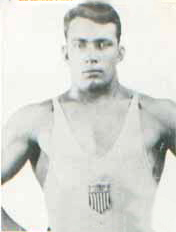
Olympian Pete Mehringer
THE OLYMPICS
Riley and Mehringer would cross paths again on July 8, 1932. Two stories are often presented on what happened on that date.
It is accepted that the two met in the heavyweight finals of the Olympic trials held in Columbus, Ohio. One story states Mehringer pinned Riley in the qualifying match. The coach for the U.S. was high on Riley and gave him a second chance, thinking the first loss was a fluke. Mehringer proved that was no fluke with a quick pin in the second match.
The second account, which seems to be backed by local papers, states Mehringer was defeated by Riley but impressed the coach so much, he made room for Mehringer on the team. An opening was left, but with only 12 days before the Olympics, Mehringer was told he could be on the team at the 192-pound weight class if he made weight. Mehringer lost the 17 pounds needed while making his journey out west to Los Angles.
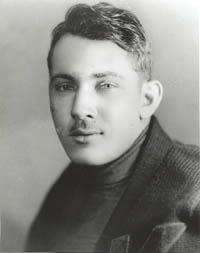
Pete Mehringer in his Kansas letter jacket. Photo courtesy Graduate Magazine
Coach Bausman told the student-run Kansan newspaper that, “Mehringer, even though he lost to Riley at Columbus, Ohio, is a member of the Olympic wrestling team.”
The United States was in the middle of the Great Depression. The Olympics, acknowledging that many competitors from around the world would struggle financially to attend the Games, instituted the Olympic Village, a living quarters for athletes to stay and eat for free. Without this, Mehringer may not have made the trip to Los Angeles for the 1932 Games. In total, nations sent fewer competitors to the 1932 Games than they did in 1928.
His ventures to the Olympics were almost as hard as winning the gold. Having little to no money, Mehringer hitchhiked back and forth to the Los Angeles Games, using the long trip to exercise during rest stops and at night to quickly lose the 17 pounds.
He made the weight and would dominate at the Olympics, quickly disposing of three competitors, including Thure Sjoestedt of Sweden in the finals. The way he ended his matches quickly earned him the nickname “Kansas Whirlwind.” Teammate Riley would lose in the heavyweight division finals, winning a silver medal.
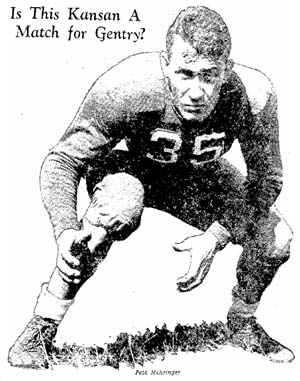
Pete Mehringer, football star
Mehringer was not alone from the University of Kansas in Olympic success, as Jim Bausch won gold in the decathlon. Mehringer and Bausch were teammates in football.
A GOLDEN RETURN TO KANSAS
It was back to Kansas following his Olympic victory for Mehringer; little did he know there would be much to celebrate. When wrestling coach Bauman quit, Phog Allen, who was athletic director and head basketball coach, refused to replace him. Mehringer would become the wrestling coach, although he was not paid for his extra service. It was like high school against for Mehringer.
Despite the gold medal, he would never return to the National Intercollegiate Meet, despite two years left of eligibility. Allen refused to pay for transit, and the trip to Los Angeles left Mehringer broke. In 1934, financially strapped, Mehringer left the University without obtaining his degree.
As an All-American lineman in college football, he was able to play professionally, making $100 a week. Mehringer played with the St. Louis Browns of the NFL for three years until 1937 and one year with the Los Angeles Bulldogs of the AFL. His stay with the Bulldogs would be rewarding in another way.
ACTING AND WRESTLING
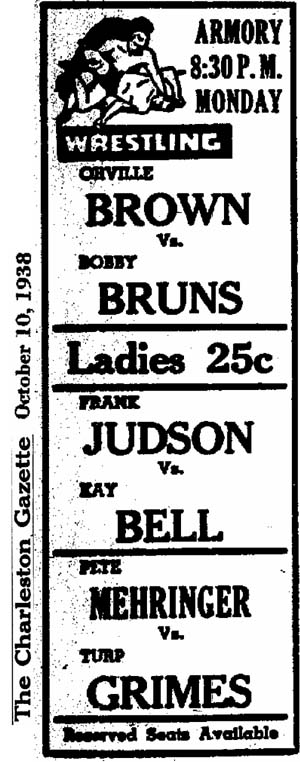
Mehringer first dabbled into professional wrestling in January 1935. Although a gold medalist, he worked mostly as a mid-carder for most of his short career. In fact, one of his first matches in February 1935 was with Paul Boesch, who would go onto great fame as the promoter for the Houston territory for the later part of the 20th century.
He was promoted as a gold medalist by Los Angeles promoter Lou Daro, who hoped locals would remember him from the Games three years earlier. On May 29, 1935, with just five months of wrestling experience, over 10,400 attended the Olympic Auditorium in Los Angeles for a match where Mehringer suffered his first professional loss to the hands of Ed “Strangler” Lewis in 27 minutes. It was Lewis’ last full-time year as a wrestler, despite still being one of the largest draw in the sport, as he went into semi-retirement later in the year due to vision loss.
Mehringer would wrestle across the world, including stints in Australia and New Zealand starting in 1936, where he had the most success. He returned there for the next decade.
Although the extent of his activity is unclear, Mehringer also dabbled in the carnival circuit — as a bare knuckle fighter — in the 1930s.
Never able to establish himself as a major star, Mehringer bounced around territories mostly in the west, although he briefly worked in the Virginias with fellow Kansan Orville Brown.
After one year with the Los Angeles Bulldogs, Mehringer quit football but stayed in Los Angeles, making it his permanent home. Although he enjoyed wrestling, he looked for work closer to home. His strong athletic background was perfect for a Hollywood stuntman. He worked as a stuntman, double and occasional actor in over a 40 movies including acting as a teammate next to Ronald Reagan in Knute Rockne All-American and as a stuntman in Bob Hope’s The Road to Zanzibar.
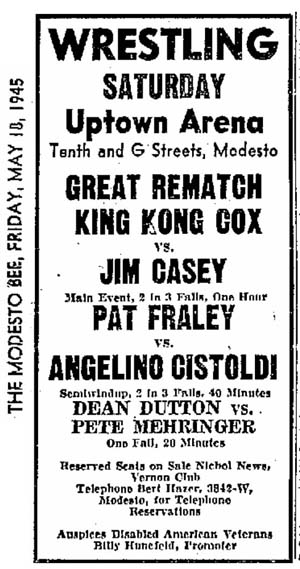
The work was a lot easier, paid more and did not require the travel that a professional wrestler had to endure. Mehringer cut in-ring time back, working mostly in the West with occasional trips to Australia and New Zealand during the 1940s.
He would end his wrestling career in the early 1950s, occasionally refereeing world title matches throughout the United States. Promoters would advertise matches refereed by Mehringer as fair and rule abiding, based on Mehringer’s gold medal status.
“The reason a referee doesn’t always break-up a match when many fans think he should is that one of the wrestlers may be merely feinting for position,” said Mehringer. “I’m a lot closer to the wrestling than the fans — so I should know.”
In Los Angeles, Mehringer would marry and start a family. One son, Pete Mehringer Jr., is currently a Professor of Archaeology at the Washington State University. He holds many honors for his archaeological research including winning the Society for American Archaeology’s Roald Fryxell Award for Interdisciplinary Research.
Great nephew, Michael Simpson, released a 10-minute short film back in 2005 named Worthy of Gold. The film was centered on Mehringer’s career in professional wrestling and bare knuckle boxing. Simpson stated back in 2005 that he hoped to one day turn it into a feature length film.
After his wrestling and stuntman career were over, Mehringer worked as an engineer with Los Angeles Department of Public Works. He is credited in either the design or building of the infamous Sepulveda Boulevard Tunnel which leads Sepulveda Boulevard into the LAX Airport. The tunnel has been featured in movies like Back to the Future and Who Framed Roger Rabbit.
BELATED HONORS
Before his recent recognition from the University of Kansas at the Booth Family Hall of Athletics two years ago, Mehringer was inducted into the National Wrestling Hall of Fame class of 1983. He was also enshrined in the Kansas Wrestling Coaches Association Hall of Fame in 1984.
When Sports Illustrated put out a special issue in December 1999 listing the top athletes to come out of each State, it listed Mehringer 44th for the state of Kansas.
Mehringer died on August 27, 1987 at the age of 77. His struggles to persevere make for a remarkable tale, and his family, university and sport all are trying to preserve his legacy.
— compiled with files from Mark D. Hersey, Department of History at the University of Kansas
Christopher Schramm has a degree from the School of Journalism at the University of Kansas. He is happy that Mehringer has been enshrined by the University at the new Booth Family Hall of Athletics, which is located in Lawrence, Kansas.
